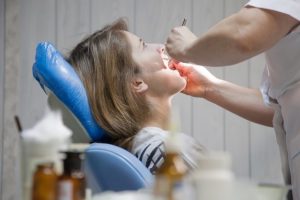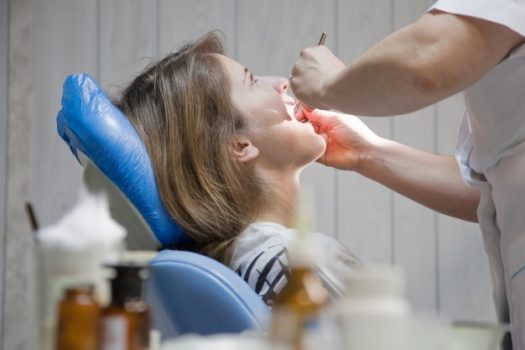What is sedation dentistry or sleep dentistry?
Sometimes in the field of dentistry medication is used to sedate a patient to help them relax while getting a dental treatment. Some people are too scared to go for dental procedures; some are paranoid of needles. It is challenging for these kinds of patients to sit calmly throughout the sitting. Their fear may also interfere with the procedure and create problems for the dentist.
Sedation dentistry is also known as sleep dentistry, but it is not correct to use the term sleep dentistry because the patient does not sleep during the procedure. They are kept awake during the entire process. They may feel relaxed and sleepy due to sedation so that they do not feel anxious and do not remember much about the treatment. It is only in the case of general anesthesia that the patient is not conscious.

What are the different levels of sedation?
The different levels of sedation are:
- Minimum sedation: The patient is awake but relaxed.
- Moderate sedation: It is a type of conscious sedation but the patient is unable to talk, and they remember very little about the procedures later on.
- Deep sedation: The patients are almost unconscious, but they can be woken up when it is required.
- Anaesthesia: In this type of sedation the patient is unconscious.
What are the different ways of sedation used in dentistry?
Previously the patients were given sedation only intravenously in the blood vessels with the help of injections. This process is quite safe for the patients. But with the progress in the field of dentistry, other methods are also used. The patient can choose the procedure according to his comfort after consulting the doctor.
The different ways of sedation are :
- Inhaled mild sedation: In this type of sedation. Nitrous oxide is mixed with oxygen and given to the patient to inhale through a mask fitted on the nose.It is a kind of mild sedation that wears off quickly. Any dentist can administer it, and it is the safest way of sedating a patient. It makes the patient relaxed but not unconscious. It is even safe for children.
- Oral sedation: It is a kind of sedation given orally through the mouth. It is administered as a pill which is usually Triazolam. It can be a mild or moderate way of sedation depending on the dosage. It is given an hour before the procedure. It makes the patient feel drowsy, but sometimes the patient may fall asleep. These patients can be woken up after the process is over. This kind of sedation is used widely in dentistry.
- Deep sedation: In this kind of sedation the patient is unconscious. They are given anesthesia through medications. These patients cannot be woken up easily. They wake up slowly only when the effect of the anesthetic wears off, or they are given medicines to alter the impact of the anesthetic.
Along with sedation, the dentist prefers giving the patients local anesthesia so that the patients do not feel any pain.
Is sedation dentistry safe for children?
Covington Dentist, Dr. Ross Quartano, explains that sedation dentistry is safe for children especially nitrous oxide or laughing gas which can be given by any dentist in his office. It is sometimes a necessity because some children are terrified of needles and dental treatments. They start interfering with the treatment and create a fuss. Some dentists have specialized training to give anesthesia to children. But the dosage is very carefully administered.
What are the different kinds of sedative drugs?
The doctors use the following drugs to sedate a patient:
- Depressants.
- Tranquillisers.
- Anti-anxiety drugs.
- Nitrous oxide.
What are the risks involved in sedation?
Though sedation through laughing gas is quite safe, there is a little risk involved in case of anesthesia. Patients who are overweight, pregnant, or have any other medical condition or sleep disorder, should talk to their dentist before opting for sedation.
Who benefits from sedation dentistry?
Apart from children, some adults too have a phobia of dental treatments they can benefit from sedation dentistry. Some people are not afraid of needles and extraction, but they are apprehensive about getting complex treatments like braces, smile makeover, etc.. Sedation may help these patients to relax, and they might feel that the treatment has taken a few minutes, but in reality, the treatment may have lasted for hours. Sometimes sedation is a necessity in case of complicated surgical procedure such as maxillofacial surgery and other tooth rebuilding procedures.
Sedation dentistry has tackled the problem of fear in patients, who would otherwise not go to the dentist and their minor dental issues would become severe.
References:
- https://en.wikipedia.org/wiki/Sedation_dentistry
- http://www.mouthhealthy.org/en/az-topics/a/anesthesia-and-sedation
- http://mymagnoliadental.com/sedation/

